Genus species:
Anas platyrhynchos
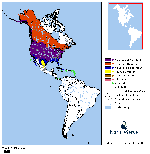
Enlarge Map
External Sites:
Cornell
USGS
Image Search
and
Male (below).
Male plumage distinctive.

Rinconada
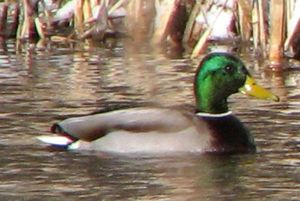
Rinconada
Ardea herodias
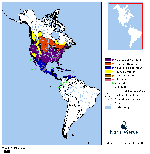
Enlarge Map
External Sites:
Cornell
USGS
Image Search
Large, often standing in water.
In flight: 72" wingspan.
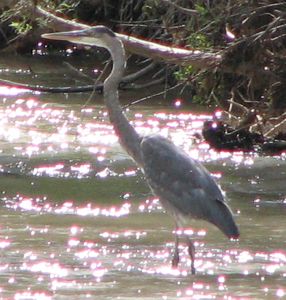
El Bosque

El Bosque
Buteo jamaicensis

Enlarge Map
External Sites:
Cornell
USGS
Image Search
If tail is not visible, other field marks can be used:
From below in flight, the dark front edges of the wings next to the body and the dark "commas" at the wrist are unique among local hawks.
When perched, the dark belly band against the white front is diagnostic.
Juveniles (lowest photo) do not yet have a red tail.
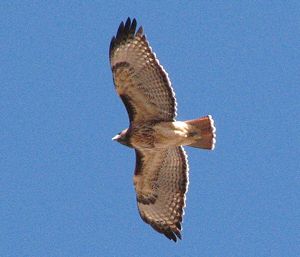
El Bosque
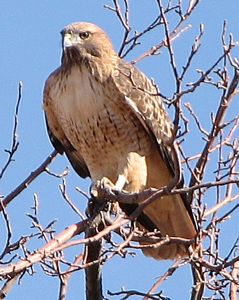
El Bosque
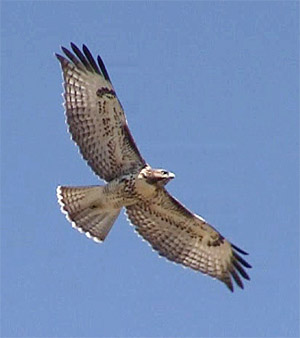
Camino Lejo, Santa Fe
Columba livia
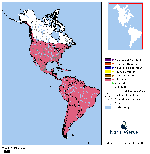
Enlarge Map
External Sites:
Cornell
USGS
Image Search
Most individuals show two dark wing bars as shown in the upper photo.
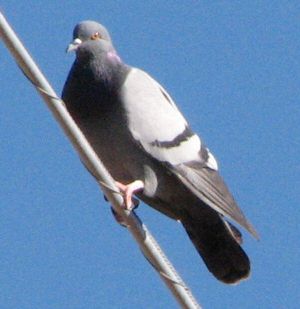
Cañoncito
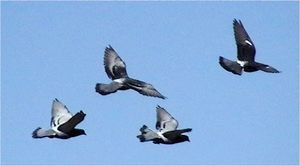
El Bosque
Picoides pubescens
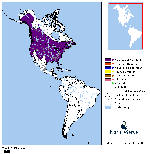
Enlarge Map
External Sites:
Cornell
USGS
Image Search
The red patch on the head indicates that this is a male.
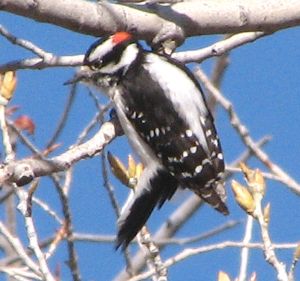
El Bosque
Colaptes auratus
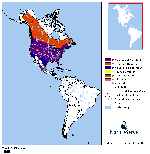
Enlarge Map
External Sites:
Cornell
USGS
Image Search
From below, shows red feather shafts in flight.
The upper photo shows key marks:
Black breast band.
Red feather shafts on underside of wings and tail.
Red mark under the eye indicates a male.
Female (middle photo): no red face mark.
Lower photo shows diagnostic white rump patch which is always visible in flight and sometimes visible when perched.
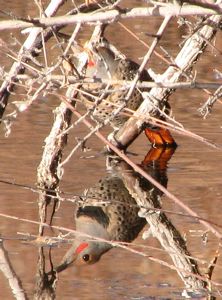
Cachanillas
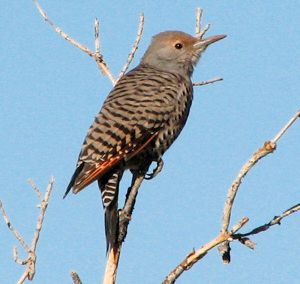
El Bosque
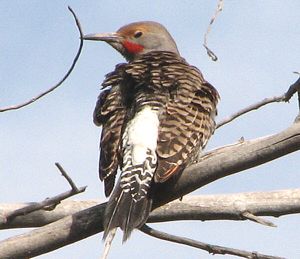
El Bosque
Aphelocoma californica
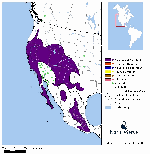
Enlarge Map
External Sites:
Cornell
USGS
Image Search
Note white throat and faint white eyebrow.
Also brownish-gray back.
Distinguished from the Pinyon Jay by longer tail and solitary behavior.
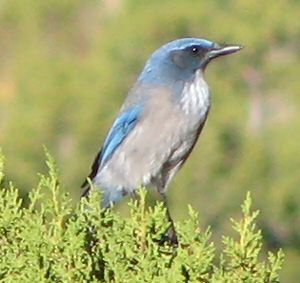
Arroyo la Mina
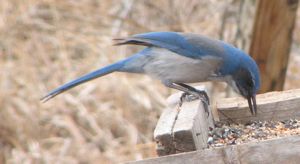
Cañoncito
Gymnorhinus cyanocephalus
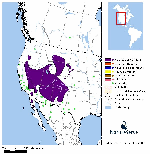
Enlarge Map
External Sites:
Cornell
USGS
Image Search
Flocks feed in harvested corn fields or on Piñon-Juniper Hillsides
Generally in flocks of 30-70 individuals.
Distinguished from Western Scrub-jay by shorter tail and by flocking behavior.
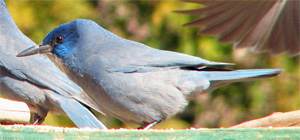
Apodaca
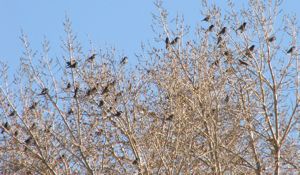
Apodaca
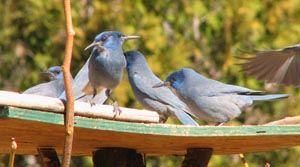
Apodaca
Pica hudsonia
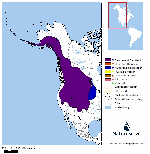
Enlarge Map
External Sites:
Cornell
USGS
Image Search
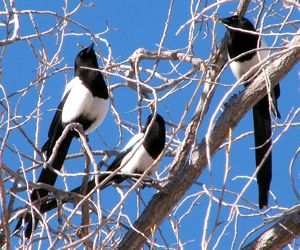
El Bosque
Corvus brachyrhynchos
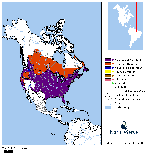
Enlarge Map
External Sites:
Cornell
USGS
Image Search
By sound, the crow's "caw" is familiar.
In flight, the crow's tail is often square or rounded.
Crows are very social and often appear in noisy groups.
Bill smaller and thinner than that of the Raven.
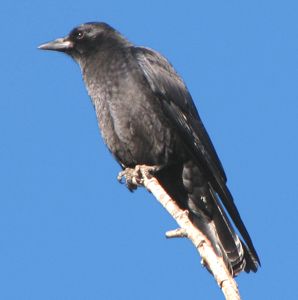
El Bosque
Corvus corax
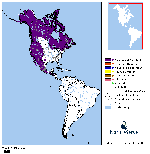
Enlarge Map
External Sites:
Cornell
USGS
Image Search
By sound, a throaty chortle or shout.
In flight, the tail often appears wedge shaped.
Ravens are often solitary, but sometimes appear with a few other individuals.
Often soars like a hawk. Crows do not.
Bill is thick and heavy. The throat is shaggy compared to the Crow.
Breeding pairs perform synchronized flight high overhead.
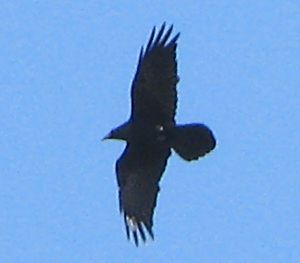
El Bosque
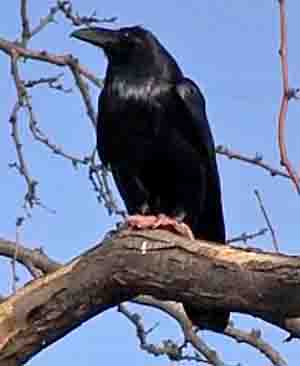
Camino de los Marquez, Santa Fe
Poecile atricapillus
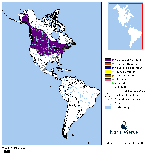
Enlarge Map
External Sites:
Cornell
USGS
Image Search
During breeding season, gives a high descending two pitched
fee-bee.
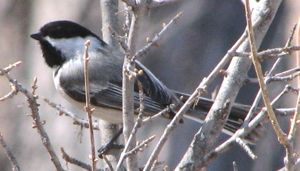
El Bosque
Psaltriparus minimus
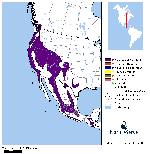
Enlarge Map
External Sites:
Cornell
USGS
Image Search
Usually travels in groups of 10-20 individuals, constantly moving from bush to bush feeding.
Flocking birds constantly make varied twittering sounds.
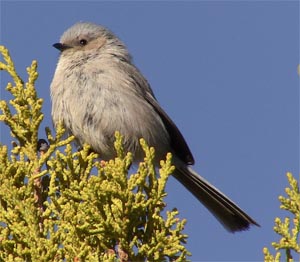
Camino Lejo, Santa Fe
Sitta carolinensis
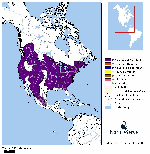
Enlarge Map
External Sites:
Cornell
USGS
Image Search
Relatively long, sharp bill.
Only local species that walks down tree trunks upside down.
Often heard at a distance: Rapidly repeated nasal "huh". Usually 5-8 sounds, all at same pitch.
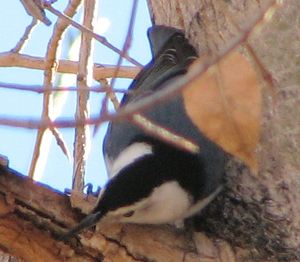
El Bosque
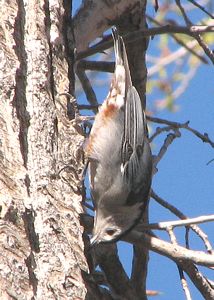
El Bosque
Cinclus mexicanus
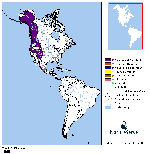
Enlarge Map
External Sites:
Cornell
USGS
Image Search
Often standing on rocks right at the water level, bobbing by bending its knees.
Feeds by walking on the bottom of the stream.
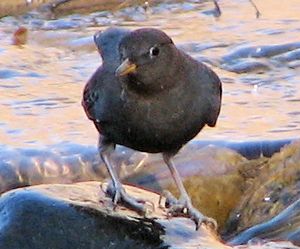
El Bosque
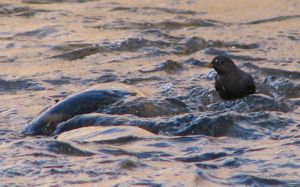
See Slide Show of Dipper Feeding
Sialia mexicana
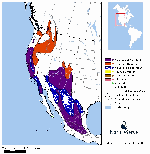
Enlarge Map
External Sites:
Cornell
USGS
Image Search
During breeding season, colors more intense than shown here.
Female (lower photo) has blue in wings, but appears gray from front with a light buffy breast.
Note white eye-ring.
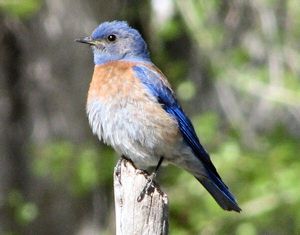
El Bosque
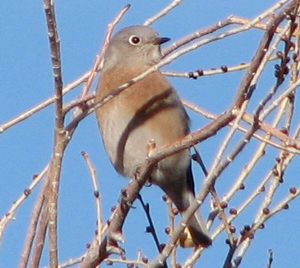
El Bosque
Turdus migratorius
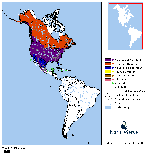
Enlarge Map
External Sites:
Cornell
USGS
Image Search
Note reddish breast, light colored bill and large white split eye-ring.
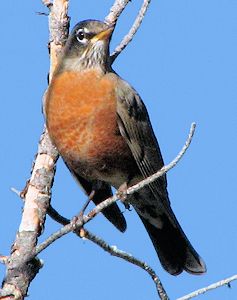
El Bosque
Sturnus vulgaris
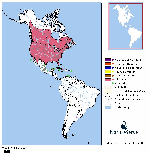
Enlarge Map
External Sites:
Cornell
USGS
Image Search
Often seen flying in large flocks. Flocks move very quickly, changing directions often.
Very short tail is distinctive among "blackbirds".
Note bright yellow bill.
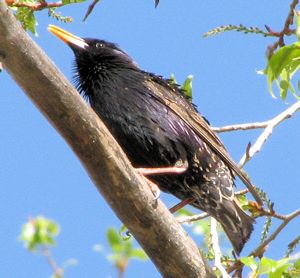
El Bosque
Pipilo maculatus
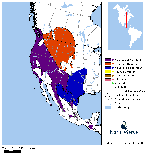
Enlarge Map
External Sites:
Cornell
USGS
Image Search
Occasionally you will see one at the edge of the road or briefly flying from one shrub to the next.
However, they regularly produce a contact call, a low growl.
Hear Contact Call
If you listen for that call and follow it, may be rewarded with a view of this lovely bird with a red eye.
Note white breast with rufous (reddish) flanks.
Lower Photo shows bird in its preferred habitat.
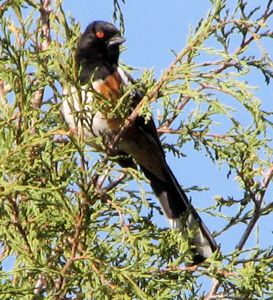
Arroyo la Mina
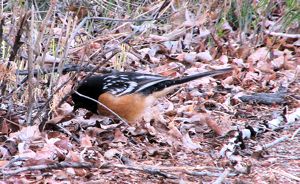
El Bosque Enlarge
Pipilo fuscus
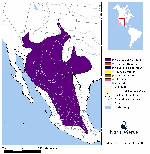
Enlarge Map
External Sites:
Cornell
USGS
Image Search
Note the buffy cap on head and buffy feathers under the tail.
Dark central spot visible on breast.
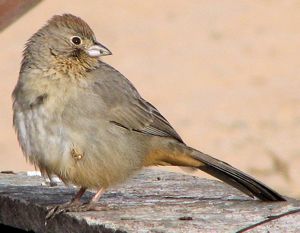
La Bolsa
Melospiza melodia
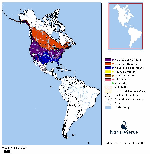
Enlarge Map
External Sites:
Cornell
USGS
Image Search
Dark back, with streaks on breasts and sides joining a dark central spot.
Has a distinctive flight highlighted by a fairly long, rounded tail.
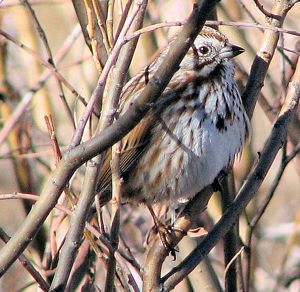
El Bosque
Carpodacus mexicanus
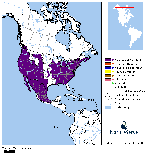
Enlarge Map
External Sites:
Cornell
USGS
Image Search
Male (upper picture) is easily identified by red plumage on head, throat, breast and rump.
Female (lower photo) does not have red.
Both sexes have streaking on breast, belly and flanks.
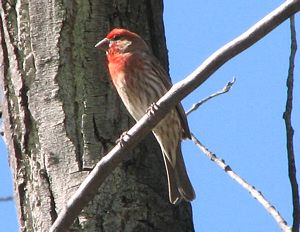
Arroyo La Mina
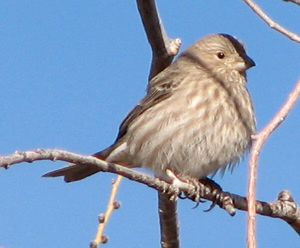
Arroyo La Mina
Passer domesticus
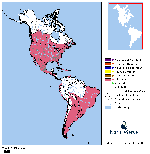
Enlarge Map
External Sites:
Cornell
USGS
Image Search
The female (upper picture) is fairly plain with a weak, white eyebrow.
The male (lower picture) has black on the throat, a strong dark mask: often black in front of eye, reddish-brown (rufous) behind the eye.
Often in noisy flocks of 5-15 individuals.
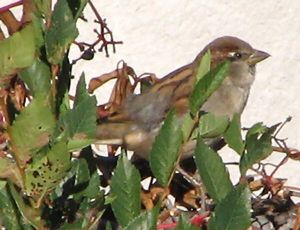
Embudo Valley Library, Dixon
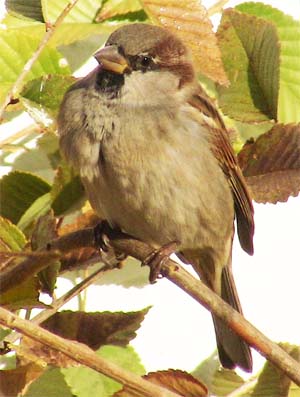
Nob Hill, Albuquerque
